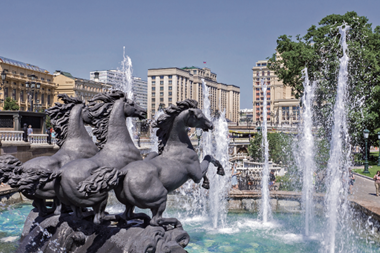Russia’s non-state pension funds (NPFs) generated an average weighted return of 10.8% in 2015, compared with 4.9% the previous year, according to sector regulator Bank of Russia (CBR).
Of the 65 funds operating mandatory pensions insurance, 23 beat the year-end inflation rate of 12.9%, while only seven funds managed to exceed the annual inflation rate, which rose to 15.6% in 2015, from 7.8% a year earlier.
The number of insured soared by 4.3m to 26.3m following a massive campaign by the funds to enrol members whose contributions were previously managed by private asset managers and state-owned Vnesheconombank (VEB), including the so-called ‘silent ones’ who were with VEB by default.
The ‘silent ones’ had until the end of the year to switch to a privately managed entity or remain with VEB.
Pensions savings grew by 51.2% year on year to RUB1,707bn (€22.5bn) as a result of earlier savings from new members and the 6% contribution rate that had been frozen in the second half of 2013.
The savings’ share of GDP grew by 0.8 percentage points to 5.9%.
The additional savings started flowing into the NPF system in the second quarter of 2015 but only to those funds – 33 by the end of the year – that had converted to joint-stock status and been accepted as members of the Deposit Insurance Agency (DIA) guarantee scheme.
Broader investment limits, including infrastructure, alongside lower limits on investments in bank deposits and long-term securities issued by financial institutions, resulted in a marked shift in asset allocation.
The share of corporate bonds grew by 8 percentage points to 46% of the aggregate portfolio, and that of stocks by 6 percentage points to 13%, while the share of bank deposits fell by 12 percentage points to 19%.
The rate of savings growth will not continue into 2016 because of the continuing moratorium, initiated in 2014, on the inflow of the 6% second-pillar contribution, which is instead being diverted into the first pillar to pay existing pensions.
Reportedly the moratorium may be extended into 2017.
Meanwhile, the Russian press is increasingly reporting a planned overhaul for the system, including the possibility of making the second pillar voluntary, alongside introducing mandatory corporate pensions provision.
The National Association of Non-State Pension Funds (NAPF), the first Russian pension fund body to obtain self-regulatory organisation status, submitted its proposals for overhauling the pensions system next year, including the introduction of mandatory corporate pensions programmes, as well as converting existing voluntary company schemes into compulsory structures.
The NAPF has proposed that the new programmes be phased in over 5-10 years, starting with companies with more than 1,000 employees.
While finance minister Anton Siluanov has said additional pensions provisions should be extended to banks and insurance companies, the NAPF believes management of the new programmes should be restricted to NPFs and guaranteed under the DIA scheme.







No comments yet